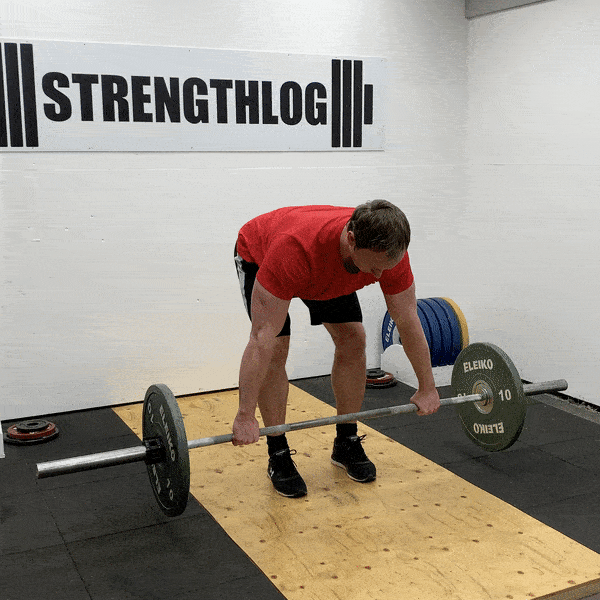
Muscles Worked in Face Pulls

Primary muscles worked:
Secondary muscles worked:
How to Do Face Pulls
- Fasten a rope handle in a high position on a cable pulley. Grip the ropes with an overhand grip, and take a step or two back.
- With elbows held high, pull the rope towards you by letting your upper arms move straight out towards your sides while simultaneously rotating your forearms up.
- Return with control to the starting position by letting your arms move forward again.
Text and graphics from the StrengthLog app.
Table of Contents
Which Muscles Do Face Pulls Work?
The face pull is a strength training exercise designed to target and strengthen the muscles in the upper back and shoulders, particularly the posterior deltoids and the rotator cuff, but also the traps and lateral deltoids.
The exercise also helps improve posture and stability in the shoulder joints.

Benefits of Face Pulls
- Good shoulder health. The face pull helps strengthen and stabilize the muscles around the shoulder joint, which can benefit lifters who frequently engage in overhead movements like weightlifting, etc.
- Helps with building a balanced upper body. By adding face pulls to your workout routine, you can help to build a bigger and stronger back, which is needed if you also do a lot of press work, to balance it out.
Face Pulls: Proper Form & Technique


Positioning
Stand up straight, a couple of steps back from the machine. Some lifters prefer to keep one foot in front of the other, while some prefer to stand with the feet in line, hip-width apart.
Keep tension in your glutes and your core active so that you keep your entire body still and stable during the movement.
Movement
Pull the rope against you, aiming for the height of your forehead. Keep your elbows high, and rotate your forearms up. Keep the movement slow and controlled.
Common Mistakes in Face Pulls
- Adding too much weight. The face pull is an exercise where it’s easy to start taking shortcuts by involving muscles other than the targeted ones, or by using excessive momentum.
- Not keeping position. By keeping your elbows below shoulder height, not lifting up your forearms, and pulling more towards your chest instead of your head, the exercise will become easier, but it will also target the wrong muscles. Be mindful of your form so that your face pulls won’t end up being high rows instead.
Face Pulls Alternatives
1. Dumbbell Rear Delt Row
The dumbbell rear delt row is another rear delt exercise that involves rowing a pair of dumbbells with your upper arms out to the sides. It is a good alternative to face pulls if you don’t have access to a cable machine.
2. Barbell Rear Delt Row
The barbell rear delt row is another exercise for your rear delts that involves rowing a barbell high up on your chest. Like in the dumbbell rear delt row, aim to move your upper arms out towards your sides.
3. Cable Rear Delt Row
The cable rear delt row is similar to the face pull, with the main difference being that you don’t rotate your forearms up.
This turns the exercise into more of a rear delt row, that will challenge your trapezius more than the face pull.
How Many Sets and Reps Should You Do in Face Pulls?
Face pulls lend themselves well to a medium-to-high rep range of about 8–20 reps per set. This is not an exercise well suited for heavy weights and low reps, and you should prioritize proper form and muscle contact over weight.
Regarding the number of sets you should do of face pulls, it depends on what other back training you are doing throughout your training week and also your fitness level.
Generally speaking, if you don’t already do plenty of back exercises and you are fairly new to training, a good starting point is to do around two to three sets of face pulls per workout, up to a max of about ten sets per week.
As you get more accustomed to the exercise, you might increase the total training volume by a few more sets. But once again, this depends on your total training volume.
Training Programs that Include Face Pulls
- StrengthLog’s 6-Day Upper/Lower Workout Split. 6x/week. A nine-week training program for intermediate to advanced lifters who want to build muscle and strength.
- Bodybuilding Ballet. 4-6x/week. A program for the intermediate to advanced bodybuilder looking for a training program dedicated to muscle growth.
Regardless if you prefer any of the programs above, to build your own program including face pulls, or just winging it, we recommend downloading our workout tracker for free right now and giving it a go.
Download the app on the buttons below:




